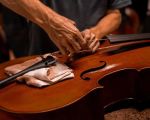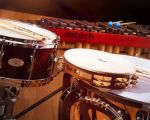- understanding-the-4-families-of-musical-instruments
- strings-from-harmony-to-emotion
- woodwinds-the-breath-of-melody
- brass-the-bold-voice-of-sound
- percussion-keeping-the-beat
- learning-and-exploring-on-beat-trigger
1. Understanding the 4 Families of Musical Instruments
If you've ever asked yourself, “what are the 4 families of musical instruments”, you're not alone. This question opens the door to a deeper understanding of how music is made, structured, and performed. The four primary families—strings, woodwinds, brass, and percussion—form the foundation of almost every piece of orchestral and contemporary music. Each group contributes its unique voice, blending to create everything from classical symphonies to modern soundtracks.
Understanding these families doesn’t just help you enjoy music more deeply—it can also guide aspiring musicians in choosing the instrument that best suits their personality and style. Whether you're a student, a music teacher, or a curious listener, knowing these families changes how you hear music forever.
2. Strings: From Harmony to Emotion
2.1 What Defines a String Instrument?
String instruments produce sound by vibrating strings, either with a bow (like the violin) or by plucking (like the guitar). This family is known for its range and expressiveness, from delicate melodies to powerful harmonies.
2.2 Common Instruments in the String Family
The violin, viola, cello, and double bass are core orchestral strings. Harps and guitars, while more popular in folk and modern music, also belong here. Each has its role—from the violin’s lyrical solos to the bass’s deep, grounding rhythm.
2.3 Why Strings Speak to the Heart
Many musicians describe strings as the most emotional family. Just think of how often violins accompany dramatic movie scenes. That’s no coincidence—strings mimic the human voice, and when played skillfully, they can sing, cry, or shout.
3. Woodwinds: The Breath of Melody
3.1 Characteristics of Woodwind Instruments
Woodwind instruments produce sound when air is blown into them, either across an opening (as in flutes) or through a reed (as in clarinets and oboes). They’re prized for their agility and dynamic range, able to flutter like birds or swell into powerful waves.
3.2 Main Players in the Woodwind Section
Common woodwinds include the flute, clarinet, oboe, bassoon, and saxophone. Each has a unique timbre—the clarinet’s warm tone, the flute’s bright sparkle, or the bassoon’s woody resonance all add distinct flavor to musical arrangements.
3.3 A Real-World Anecdote
Take Ella, a young student who picked up the clarinet after hearing it in a school concert. “It felt like a voice I didn’t know I had,” she said. “Every time I played, it was like speaking without words.” Stories like hers show how personal and expressive the woodwind family can be.
4. Brass: The Bold Voice of Sound
4.1 How Brass Instruments Work
Brass instruments require the player to buzz their lips into a metal mouthpiece. The tubing amplifies and shapes this sound, which can range from heroic and bright to dark and somber.
4.2 Essential Brass Instruments
Trumpets, trombones, French horns, and tubas are the staples. They’re loud, expressive, and vital in both orchestral and marching band settings. A trumpet solo can cut through a full ensemble with brilliance, while a tuba anchors with gravitas.
4.3 From Stadiums to Symphonies
Brass is often associated with energy and celebration. Picture a brass section in a jazz band or the triumphant finale of a film score. The boldness and power of brass make it unforgettable in both classical and pop genres.
5. Percussion: Keeping the Beat
5.1 What Makes an Instrument Percussive?
If it’s struck, shaken, or scraped to make sound, it’s percussion. This family includes drums, cymbals, xylophones, and even tambourines. Percussion adds rhythm, punctuation, and sometimes even melody.
5.2 The Wide Range of Percussion Instruments
From timpani in orchestras to electronic drum pads in pop music, percussion spans cultures and genres. It’s also the most global family—every society has its own rhythm instruments, from African djembes to Japanese taiko drums.
5.3 More Than Just the Background
Many assume percussion only keeps time, but it does much more. A well-placed cymbal crash or marimba melody can define an entire movement. In fact, modern composers increasingly use percussion to drive emotion and drama in their work.
6. Learning and Exploring on Beat Trigger
Now that you can confidently answer “what are the 4 families of musical instruments”, you might be ready to dive deeper. Whether you're curious about how to start learning percussion or want to compare different violins, Beat Trigger offers expert guides, curated gear, and community support to help you explore your musical journey.
From beginner tips to advanced breakdowns of orchestral roles, Beat Trigger connects you with the tools and stories that make music education engaging and personal. No matter your skill level, there’s something waiting to inspire you.








